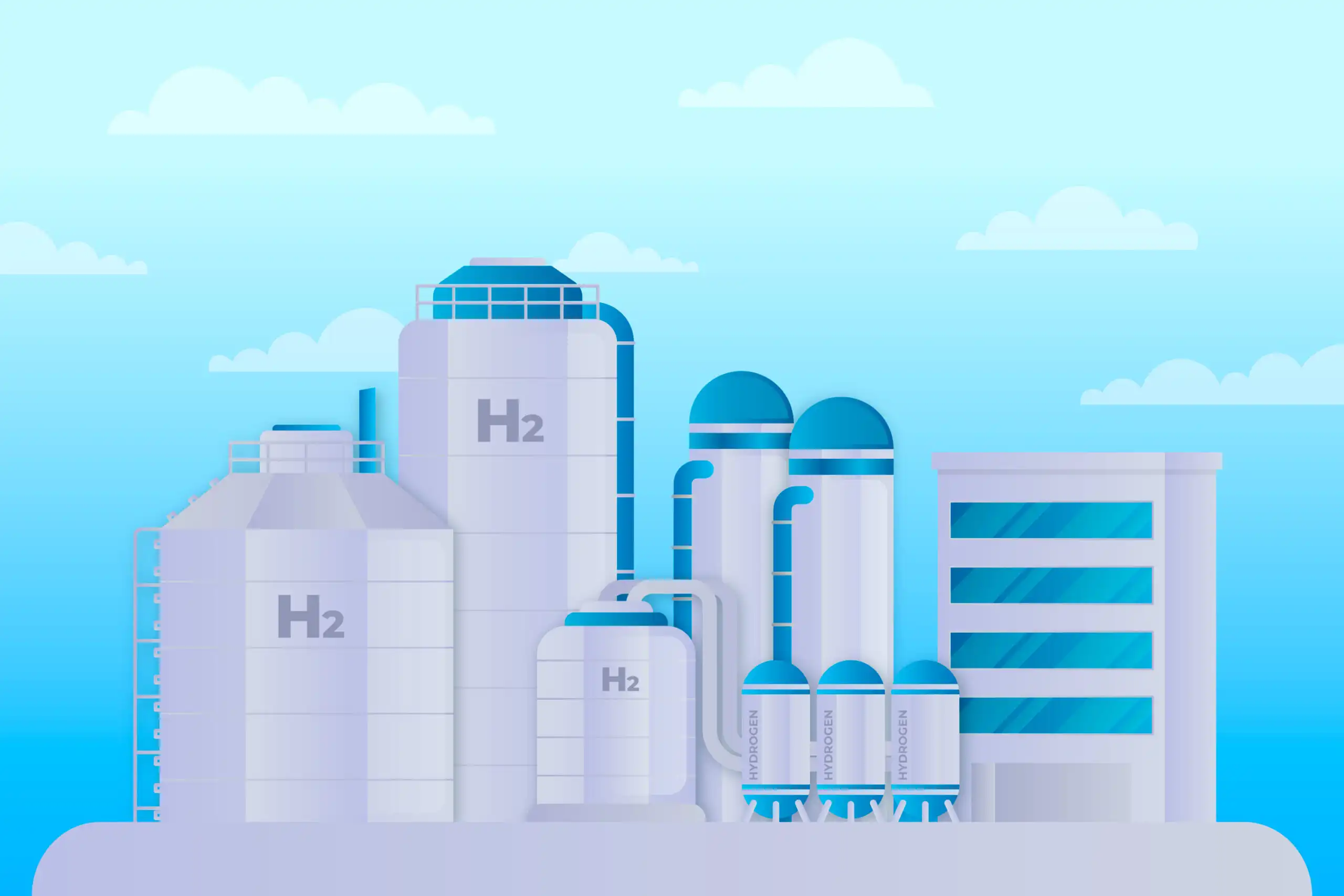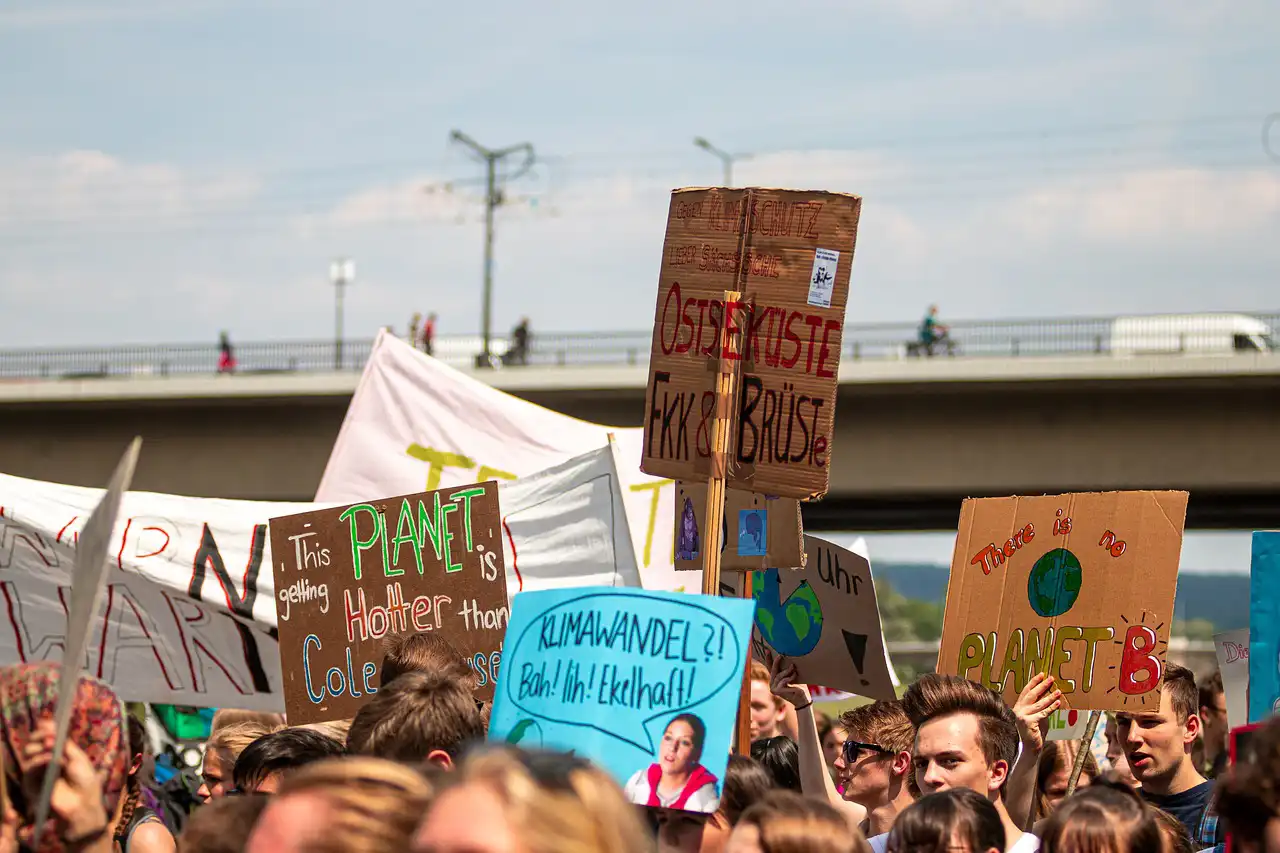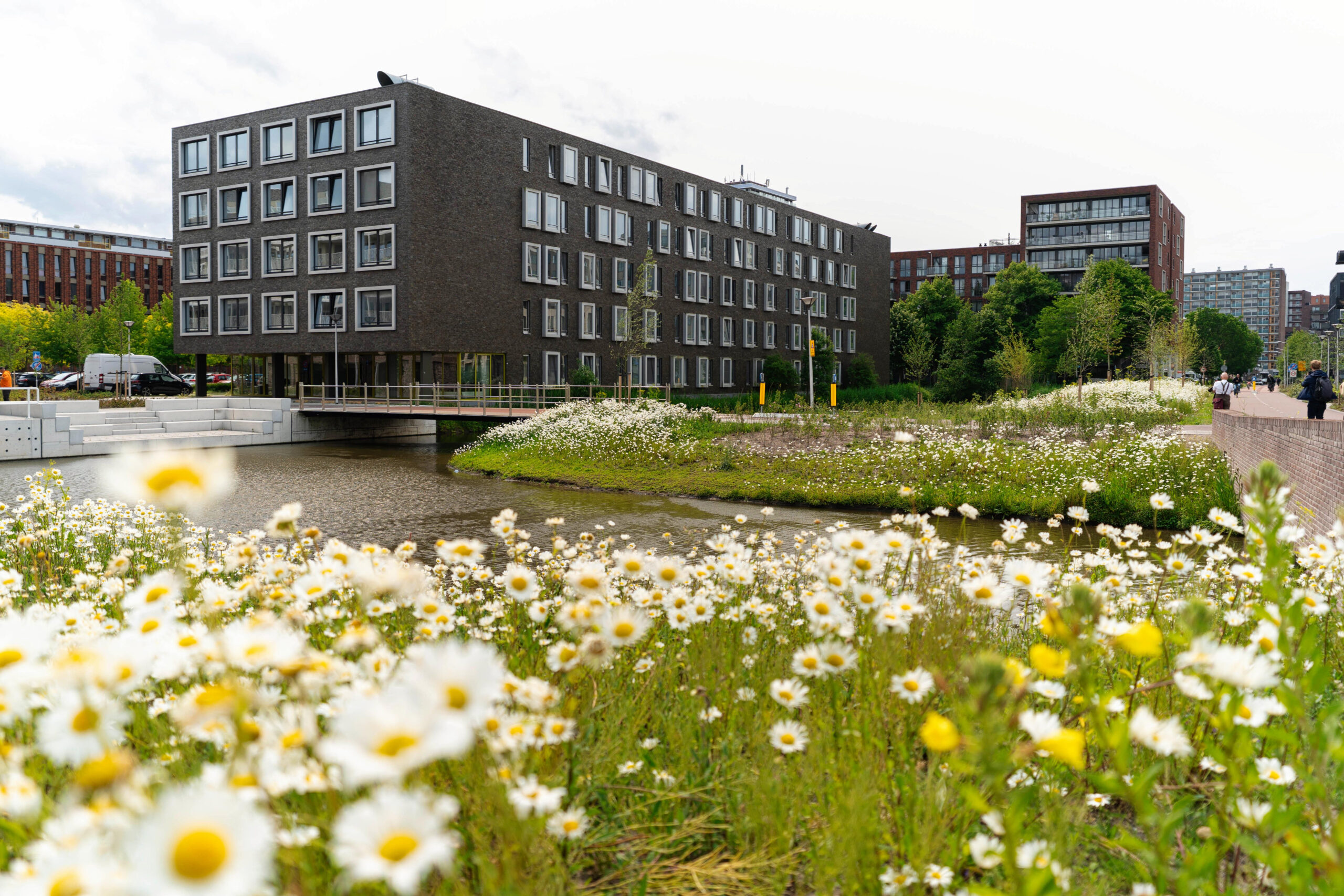Post
4 Min.

16. June 2025
Green Energy from North Africa: On conflicts um Wasserstoffexporte aus Tunesien
In order to achieve its ambitious climate targets, the EU wants to import renewable energies in the form of green hydrogen. Tunisia shows how much criticism this strategy is attracting and what potential for conflict it harbours. Understanding this should make it possible to shape the energy transition in a way that is as conflict-sensitive as possible.
It sounds so promising. The European Union has set itself ambitious targets for reducing greenhouse gas emissions: by 2030, it wants to reduce its emissions by 55 percent compared to 1990 levels. By 2050, the community of states wants to be climate neutral.
To achieve these goals, the EU also needs renewable energy from abroad, which is to come from North Africa, among other places. There, where vast deserts promise not only space but also plenty of solar energy, electricity is to be generated and used to produce green hydrogen (GH2). This green hydrogen is particularly needed by Germany’s energy-intensive industry. According to the positive view of a hydrogen economy, North African governments could use the revenue to stimulate economic development in their own countries.
This picture is not consistent with the fact that non-governmental organisations, social movements and the scientific community are increasingly opposing hydrogen exports. However, what issues may arise in this context?
Green energy from North Africa – why export?
Three topics have been widely discussed for some time now: energy, water and land issues. A lot of energy is lost in the conversion of electricity into green hydrogen, which has been very energy-intensive to transport up to the point where it is used to produce green steel in Germany, for example.
Critics ask why green electricity is not fed directly into the electricity supply of North African countries. There, fossil fuels are still the main source of energy for the population and economy.
In addition, the use of coal, gas and oil can pose an economic problem for the countries concerned: with the Carbon Border Adjustment Mechanism (CBAM), the EU will levy a CO2 tax on CO2-intensive products such as steel and cement produced outside the EU from 2026 onwards. If there is insufficient renewable energy available for domestic industry, this will reduce the competitiveness of North African countries.
Hydrogen production despite water scarcity
Another concern relates to water supply in a region that is already extremely arid. Climate change has further exacerbated the situation. Years of drought are plaguing these countries and their water-intensive agriculture. If even more water is used for energy exports, this would have a negative impact on food supplies in these countries, as well as on their agricultural exports.
No problem, say proponents. Desalination plants will be used to extract fresh water from salty seawater, which will not only serve the green hydrogen industry but also supply the population. Problem solved?
“Kritiker:innen fragen, warum der grüne Strom nicht direkt in die Elektrizitätsversorgung der nordafrikanischen Länder fließt. Dort sind fossile Brennstoffe immer noch Hauptenergielieferant für die eigene Bevölkerung und Wirtschaft.”
– Irene Weipert-Fenner, PRIF
Not quite yet. For one thing, desalination is a very energy-intensive process. This means that it would require even more renewable energy than is already needed for the national energy transition and for energy exports.
Secondly, desalination produces brine and wastewater containing heavy metals, which, as things stand today, are simply discharged into the Mediterranean Sea. Since the Mediterranean Sea is considered an open sea due to its access to the Atlantic Ocean, where the brine can spread widely, this is often presented as unproblematic.
However, there are no models showing what would happen if all Mediterranean countries were to suddenly start desalination on a large scale. This is because all Mediterranean countries suffer from drought and water-intensive agriculture is also widespread. This means that general water demand is rising anyway. There are also no scenarios available showing how many additional desalination plants with and without (more or less ambitious) green hydrogen production would be necessary.
Green energy and land conflicts
Another frequent criticism is the potential for land conflicts. Solar and wind power plants require around ten times more space than fossil fuel power plants, and electrolysers for hydrogen production and desalination plants also take up space.
A glance at North Africa suggests that there should be sufficient space in the Sahara. However, this overlooks the fact that some areas suitable for renewable energy production are home to people who farm and raise livestock there. This land is often used collectively but is not formally owned by its users. If private investors now officially acquire the land, there is a risk that the local population will be displaced. This conflict already existed during colonial times and could be repeated here. Furthermore, the green hydrogen economy also needs space on the coasts for desalination plants in order to use seawater and return the aforementioned brine there.
Hydrogen exports reinforce global dependencies
In addition to specific damage and conflicts, activists and some researchers also criticise the distribution of profits and benefits from the production of green hydrogen. According to critical voices, the goal of the GH2 economy is not to combat climate change, but to maintain unsustainable consumption and production models in the global North.
The gas industry in particular would welcome the ‘h2-ready’ label if it meant that infrastructure for fossil fuels could be created or maintained with a clear conscience, promising an easy transition to green hydrogen.
“ Ziel der GH2-Ökonomie, so kritische Stimmen, sei nicht die Bekämpfung des Klimawandels, sondern nicht nachhaltige Konsum- und Produktionsmodelle im globalen Norden aufrechtzuerhalten. “
– Irene Weipert-Fenner, PRIF
Activists, on the other hand, speak of neo-colonialism, seeing a continuation of power imbalances and dependencies, including in the financing of expensive technology through loans, which would further reduce the financial leeway of countries that are already heavily indebted in some cases.
When new conflicts meet existing ones
However, this list of criticisms is by no means exhaustive. What has not yet been considered is the question of how GH2 projects – including the direct potential for conflict outlined above – will affect existing conflicts in North African countries.
Using Tunisia as an example, I was able to demonstrate interactions with internal conflicts in my PRIF report ‘Green Hydrogen Production in Tunisia: the Interplay of Old and New Lines of Conflict’:
- In marginalised regions, there is already a high level of mistrust towards the political centre, which is transferred to the GH2 projects and expressed in protests.
- The GH2 projects initiated by private companies are fuelling the conflict between advocates of a liberal private sector and opponents who believe that the state should play a strong role in the economy and in ensuring social welfare. The private sector’s pursuit of profit clashes with the understanding of energy as an existential good that the state should provide to all citizens at affordable prices – which it has done since independence from France in 1956. Renewable energies for the domestic market are supported by the general population, as shown by survey results from the Arab Barometer (2024).
- The accusation of neo-colonial structures in the GH2 economy is met with an increasingly Europe-critical political and public discourse, fuelled by the populism of President Kais Saied, who likes to scapegoat foreign powers for the economic situation.
At the same time, this critical stance is certainly fuelled by concrete experiences with European politics, whether it be the EU’s apparent disregard for its supposed values such as democracy and the rule of law when it comes to migration deals, for example, or its perceived one-sided support for Israel in the Gaza war.
Renewable energy from North Africa, and green hydrogen in particular, are therefore anything but a simple win-win model in the fight against climate change. Rather, there is a need for a (self-)critical discourse in Europe about the potential for conflict in other regions of the world and the possibilities for a conflict-sensitive energy transition.
Über diesen Artikel
Lesen Sie auch

Social-ecological transformation: Stuck between enthusiasm, resistance and unusual alliances
Between optimism and resistance: the socio-ecological transformation is dividing society. While some are calling for radical change, others want to prevent any environmental protection measures. Unusual alliances could help the transformation succeed.

How communities can improve the integration of migrants
Millions of people seek asylum in Europe every year. However, complex rules make it difficult for migrants to arrive and integrate successfully. Local authorities have opportunities to facilitate the integration process. We present a few examples.

From street noise to equal opportunities: how cities can make us healthier
There are significant differences between cities in terms of how healthily people can live. Some cities set a good example and pay close attention to the health of their residents. Other neighbourhoods are very noisy, dangerous and have high levels of air pollution. There are fewer green spaces or suitable places to play and exercise. […]

